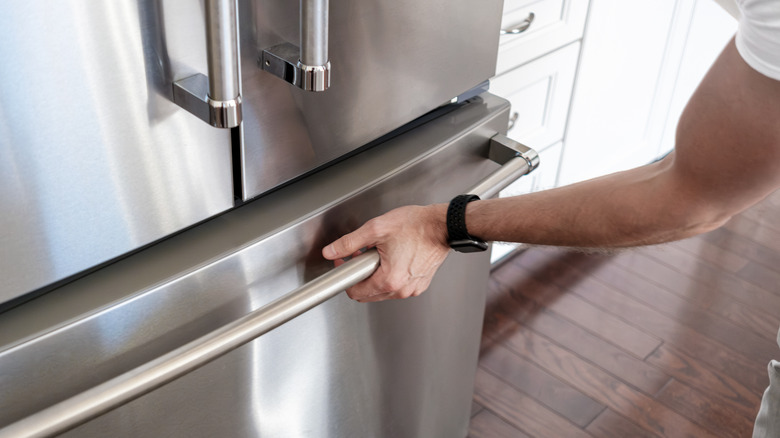Yes, You Can Freeze Gravy, But Only A Certain Type Will Keep
We may receive a commission on purchases made from links.
Some foods that seem straightforward are actually deceptively labor intensive. Tossing a salad together? Enjoy your new life's work rinsing and drying greens before you even begin slicing and dicing all your other ingredients. Simply frying an egg? Good luck navigating a long list of common mistakes ruining fried eggs. Gravy's very much the same. You might think it's more or less just meat drippings from a basic roasted turkey performing most of the work. But achieving your gravy's ideal thickness can be tricky, for one. Happily, however, unlike those laborious salads and troublesome sunny-side-up eggs, you can freeze gravy pretty successfully — so long as you're putting the right kind into cold storage.
First of all, we're obviously not talking about Italian Sunday gravy, also known as "red," "pasta," or, broadly, "tomato" sauce, which is practically made for freezing. But you can also freeze a lot of the animal protein variety (and occasional vegetable version), provided that it does not list any cream among its ingredients. Like, even a little. That's because the cream will separate during the freezing process and never properly mingle again, instead assuming a gritty texture. It's the ancient battle between oil and water, which yearn to be apart. So, while you won't want to freeze some of the creamier sausage gravies you'd commonly serve over biscuits, those more likely to appear on the typical Thanksgiving table (and again any that are crucially absent cream) hold up nicely when put on ice.
How to freeze your (non-cream!) gravy, plus ways to use it up
Our pals at the USDA advise that if you aren't going to finish your gravy in under four days, you can freeze it for up to six months. Not quite long enough to stretch it from one holiday season to the next, but still a pretty long time. We like to freeze a lot of liquids in large cube ice trays, like this OXO silicone tray with a lid for easy packing. You can also encase the whole thing in a few layers of plastic wrap if you intend to test the limits of the regulatory agency's guidance. And, of course, you can always just use a stand-and-fill resealable plastic freezer bag or other freezer-safe airtight container.
Or, you can finish the job! Of eating gravy, that is. You can stir it in for richer, more savory soups, provided you keep your consistencies fairly equal. You can also add a dollop to the top of foods like meatloaf and roast beef to mitigate drying when reheating them in the microwave. You can even grab some cheese curds and french fries and give thanks to Canada by preparing the country's beloved poutine.

